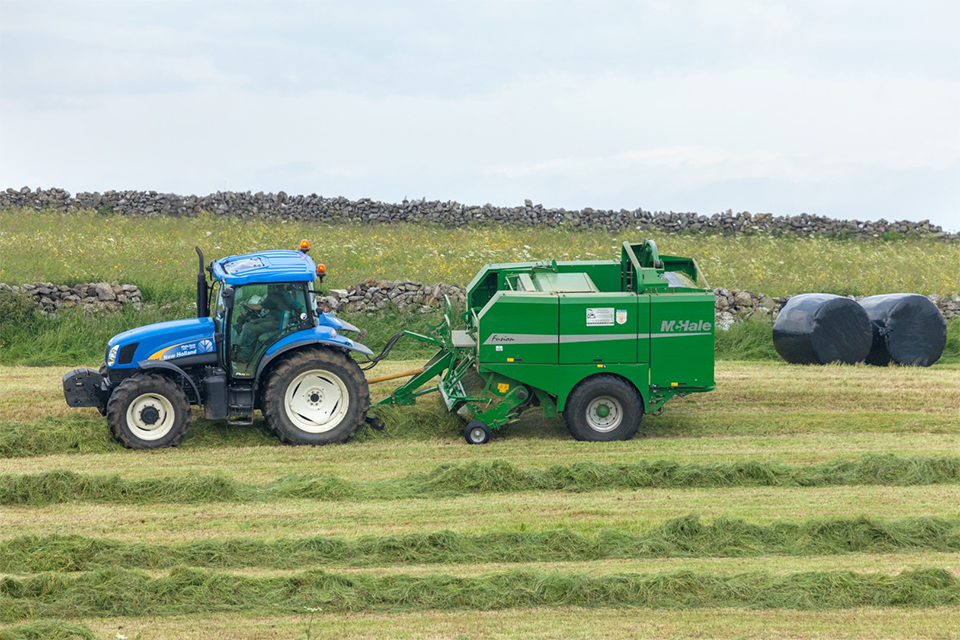Species-rich grasslands protected and restored
The Peak District has five special grassland habitat types - lowland meadows, limestone grassland, acid grassland, rush pastures and calaminarian grassland.
Surveys in the Peak District show a 50% loss of flower-rich meadows in the decade following the mid-1980s (opens new window). Indicator species in 56 meadows that were compared between the 1980s and 1990s declined on average from 10.4 to just 1.7 (opens new window).
Although small (sometimes less than one metre square), calaminarian grasslands occur where lead has been mined and waste materials left abandoned on the surface and are of international importance. Each is unique and irreplaceable, but also easily destroyed.
Methods of using and maintaining species-rich grasslands often doesn’t fit with modern farming systems. Farmers and land managers need advice and financial support to ensure these important habitats have a place in future farm businesses.
Surveys show that the Peak District excels for waxcap and fungi grasslands, having internationally, nationally, regionally and locally important sites. Using the more traditional grazing methods employed in the Peak District are important to the conservation of these species.
Almost 90% of waxcap species are on European Red Lists (opens new window). Generally unimproved, permanent and grazed, waxcap grasslands can also include rare species, such as the pink waxcap, which has been found at 12 sites in the Peak District (opens new window).

# For nature
- Traditionally managed hay meadows and pastures are some of our most biodiverse habitats. The best hay meadows have more than 50 different plant species.
- Species-rich grasslands are vital for maintaining healthy populations of invertebrates, including bees, butterflies and moths that are in sharp decline.
- Traditional management by grazing and/or cutting annually means species can complete their life cycle. For example, ground-nesting birds are vulnerable to machinery, and some insects overwinter as pupae in longer, native grasses.
- Restoring species-rich grasslands helps maximise the genetic diversity of the species associated with them, which may be key for adapting to climate change.
- Wet and rushy pasture can support a rich diversity of wetland plants and invertebrates, and provide important breeding and feeding habitat for ground-nesting birds, including curlew, snipe and lapwing.
- Creating new species-rich grasslands from those that have been semi-improved will help link our limited remaining meadows and pastures.
- Non-traditional species-rich grasslands are now more important than ever. Field margins, trails, rights of way, road verges and green lanes can all contribute to the flower-rich resource and create corridors between fields.
- Advances in survey technique, e.g. through DNA testing, can help detect more waxcap and fungi grasslands, and could be used for other surveys to build on our knowledge of grasslands in the Peak District.
- The underground mycelia (opens new window) play a central role in the function of our ecosystems (opens new window).
# What else can species-rich grasslands deliver?
Less intensively managed grasslands, especially those with no slurry or inorganic fertilizer inputs and lots of legumes, can store large amounts of carbon, particularly in their soils.
Grasslands that contain a mix of species can provide a natural balanced diet for livestock with more nutrients, reducing the need for supplements or veterinary attention. Deep-rooted plants are more tolerant to drought and bring up minerals from deeper within the soil, meaning fewer inputs may be needed.
Many of the plant species have beneficial properties for grazing livestock. Birds-foot trefoil is rich in protein, is an anthelmintic (opens new window) and can even help cut methane emissions. This may mean reduced inputs and reduced costs, for example by lower vet bills (opens new window).
Small bale hay can be sold at a premium, for example to horse owners.
Flowering meadows are a visual spectacle, providing beauty and enjoyment for people. They can thus be incorporated into visitor business opportunities.
Maintaining species rich grassland can protect sensitive archaeological features.
Meadows are celebrated in our folklore, customs and literature and represent the essence of the traditional farming cycle, evolved over many years. For local people, meadows can represent their links to the past and their ancestors’ way of managing the land.
Fungi are linked to our Anglo-Celtic culture, such as ‘fairy ring’ folklore, and have been an important food source for millennia.
Waxcaps and other fungi are a key part of healthy soils and enable nutrient cycling.
Fungi can help sequester carbon from the atmosphere and fix it in the soil.

# In practice
- Manage hay meadows traditionally by shutting to livestock during spring and early summer, then cut once plants have flowered and set seed, between July and September. Aftermath graze, ideally using cattle.
- Avoid applying synthetic fertiliser or slurry.
- Cut in a wildlife-friendly way to allow mobile species to escape.
- In some cases, scrub will need to be removed to stop it shading out the wildflowers. In the dales, species-rich limestone grasslands are often found on one slope, meaning scrub control may be needed on one side of a dale but less or none on the other.
- Avoid drainage of wet grasslands and consider rewetting where appropriate, including restoration of floodplain meadows.
- Manage rushes by grazing and cutting to achieve a range of densities to suit different species.
- Consider options to reduce nest predation (opens new window) of ground-nesting birds where necessary, alongside habitat management.
- Do not disturb grassland soils by ploughing.
- Grasslands important for fungi are not suitable for tree planting.
- There are many management methods that can maintain and promote grassland fungi (opens new window), for example creating a short sward by grazing, or cutting and aftermath grazing.
- DNA sequencing from soil samples can be used to accurately identify which fungi are present, even when there is no fruiting body above the surface.